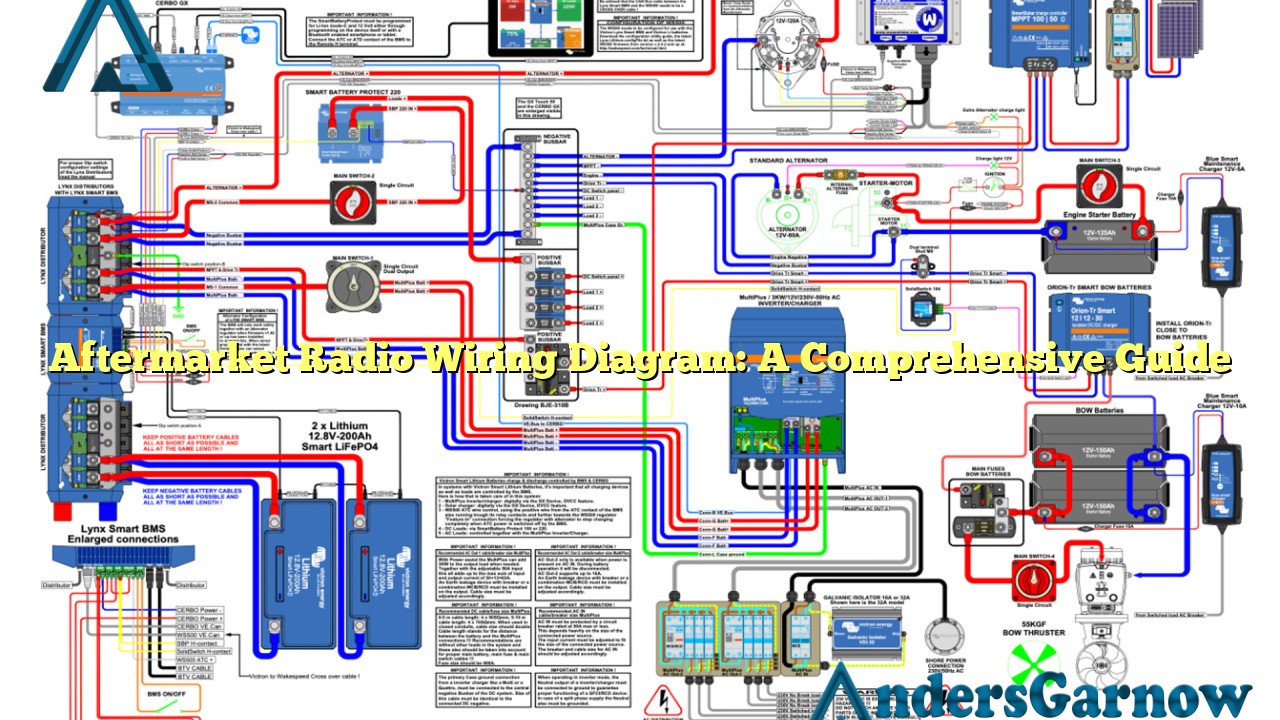Hello, dear readers! Today, we will dive into the world of aftermarket radio wiring diagrams. If you are looking to install an aftermarket radio in your vehicle, understanding the wiring diagram is crucial. In this article, we will explore the ins and outs of aftermarket radio wiring diagrams, discussing their benefits, drawbacks, and alternative options. So, let’s get started!
1. Understanding Aftermarket Radio Wiring Diagrams
Before we delve into the specifics, let’s first understand what aftermarket radio wiring diagrams are. Simply put, these diagrams outline the electrical connections required to install an aftermarket radio in your vehicle. They provide a visual representation of the wires, their colors, and their corresponding functions.
2. The Benefits of Aftermarket Radio Wiring Diagrams
One of the major advantages of aftermarket radio wiring diagrams is that they simplify the installation process. By following the diagram, you can easily identify which wire connects to each component of your radio system. This ensures a hassle-free installation and saves valuable time.
3. The Drawbacks of Aftermarket Radio Wiring Diagrams
While aftermarket radio wiring diagrams are incredibly useful, they do have a few drawbacks. Firstly, some diagrams may not be accurate or up to date, especially for older vehicle models. It is essential to double-check the information provided in the diagram with reliable sources or consult a professional. Additionally, interpreting the diagram correctly may require some technical knowledge, making it challenging for beginners.
4. Exploring Alternative Options
If reading and interpreting wiring diagrams seems too daunting for you, don’t worry! There are alternative options available. One option is to purchase a pre-wired aftermarket radio harness. These harnesses come with the necessary wires already connected, simplifying the installation process. However, it is crucial to ensure that the harness is compatible with your vehicle’s make and model.
5. Aftermarket Radio Wiring Diagram: A Detailed Breakdown
Now, let’s dive into the details of an aftermarket radio wiring diagram. The diagram typically consists of several components:
| Wire Color | Function |
|---|---|
| Red | Power |
| Yellow | Memory |
| Black | Ground |
| Blue | Antenna |
| Green | Left Rear Speaker (+) |
| Purple | Right Rear Speaker (+) |
| White | Left Front Speaker (+) |
| Gray | Right Front Speaker (+) |
Please note that these wire colors and functions are just examples and can vary depending on your vehicle’s make and model. Always refer to the specific aftermarket radio wiring diagram for accurate information.
6. Frequently Asked Questions (FAQ)
Q: Can I install an aftermarket radio myself?
A: Yes, you can install an aftermarket radio yourself by following the wiring diagram or using a pre-wired harness. However, if you are unsure or uncomfortable with the process, it is advisable to seek professional assistance.
Q: How do I find the correct aftermarket radio wiring diagram for my vehicle?
A: You can find the correct wiring diagram by referring to the aftermarket radio’s manual or consulting online resources specific to your vehicle’s make and model.
In Conclusion
Aftermarket radio wiring diagrams are essential tools for installing a new radio system in your vehicle. While they offer numerous benefits, such as simplifying the installation process, it is crucial to double-check their accuracy and consult professionals if needed. Alternatively, pre-wired harnesses provide a convenient alternative. Remember, always refer to the specific wiring diagram for your vehicle to ensure a successful installation. Happy radio upgrading!

